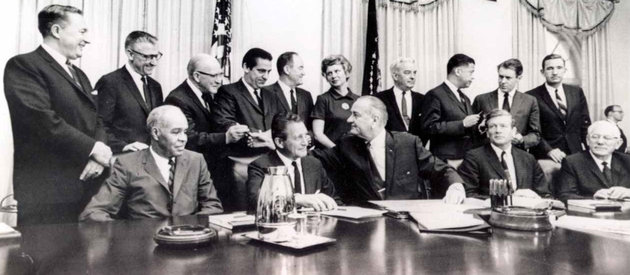
Looking at the impact of the Kerner Commission's report, three distinguished, black journalists discussed the importance of intersectionality and representation within the media from 50 years ago to today on Tuesday night.
The Kerner Commission was established by former president Lyndon B. Johnson in order to address the causes of the race riots of 1967 and attempt to provide long-term recommendations moving forward. In a panel facilitated by Eugene S. Pulliam Distinguished Visiting Professor Miranda Spivack, journalists Paul Delaney, Richard Prince and Dr. Ava Greenwell discussed the findings of the commission’s report and the impact those findings had for media in the years after.
Paul Delany, founding member of the National Association of Black Journalists (NABJ) and 2010 NABJ Lifetime Achievement recipient, noted at how he began his career in the midst of the racial struggles the Kerner Commission outlined. The report is “biting and stinging” in its language and is one of “the best to come out of Washington,” Delany said. He, alongside the other two panelists, recommended that everyone read the report to get a full grasp of the language.
Panelist Richard Prince, founding member of the William Monroe Trotter Group and founding editor of Black College Wire, highlighted some of the big takeaways from the report. Firstly, journalism was (and, as showcased through the panel discussion, still today can be) backward in its representation of black communities. Secondly, the world offered to a black audience is white in not only appearance, but additionally attitude, Prince said.
Delany noted that as his career has progressed, the polarization of white and black communities has increased, as predicted by the report. Prince supplied information on why that could be the case. There is a devaluation of covering community issues for people of color and media is ignoring that the United States is becoming a majority minority nation, Prince said.
Junior Conner Berry hadn’t heard of the Kerner commission before last night’s talk, but was encouraged to attend after listening to Opal Tometi’s talk. From his experience and understanding, he noted that one of the central issues of Black Lives Matter is the media.
“That’s where I first started hearing about the problems of the media not portraying certain issues and over portraying [other] issues,” Berry said.
Dr. Ava Greenwell, 2006 Educator in the Newsroom Fellowship recipient and 2001-2002 McCormick Distinguished Clinical Professor award recipient, stressed the importance of intersectionality and representation within management. She discussed the “gatekeeper function” that managers and editors serve in dictating content. “[The] audience doesn’t know what doesn’t get told,” Greenwell said in emphasizing the importance of having minorities help dictate the content shared by media platforms, which is still lacking in the modern industry.
She referred back to the report in the context of representation. “[The report] is a time out for tokenism,” Greenwell said.
Greenwell also discussed intersectionality by addressing a question on black women in media, particularly, by addressing how black women aren’t typically seen with their natural hair and what this means for modern narratives and representation.
Myrna Hernandez, dean of students, noted the discussion of intersectionality across both the Kerner panel and Opal Tometi’s talk. She referenced the discussion of women, specifically women in the media, and how someone should not negate other identities.
“For us, and our identities, what does that mean in our given industry? I think examining and figuring that out is really important,” Hernandez said.
